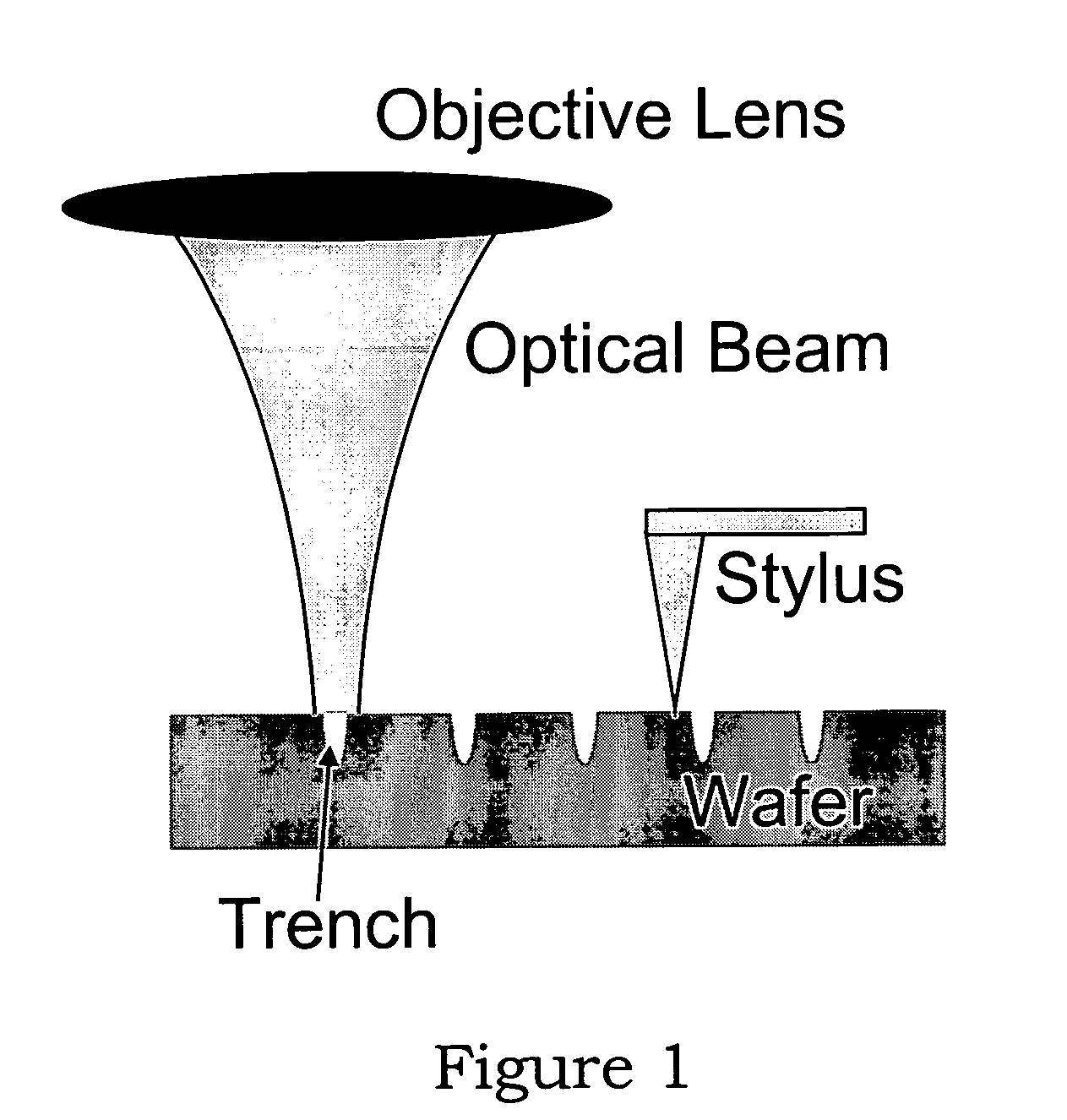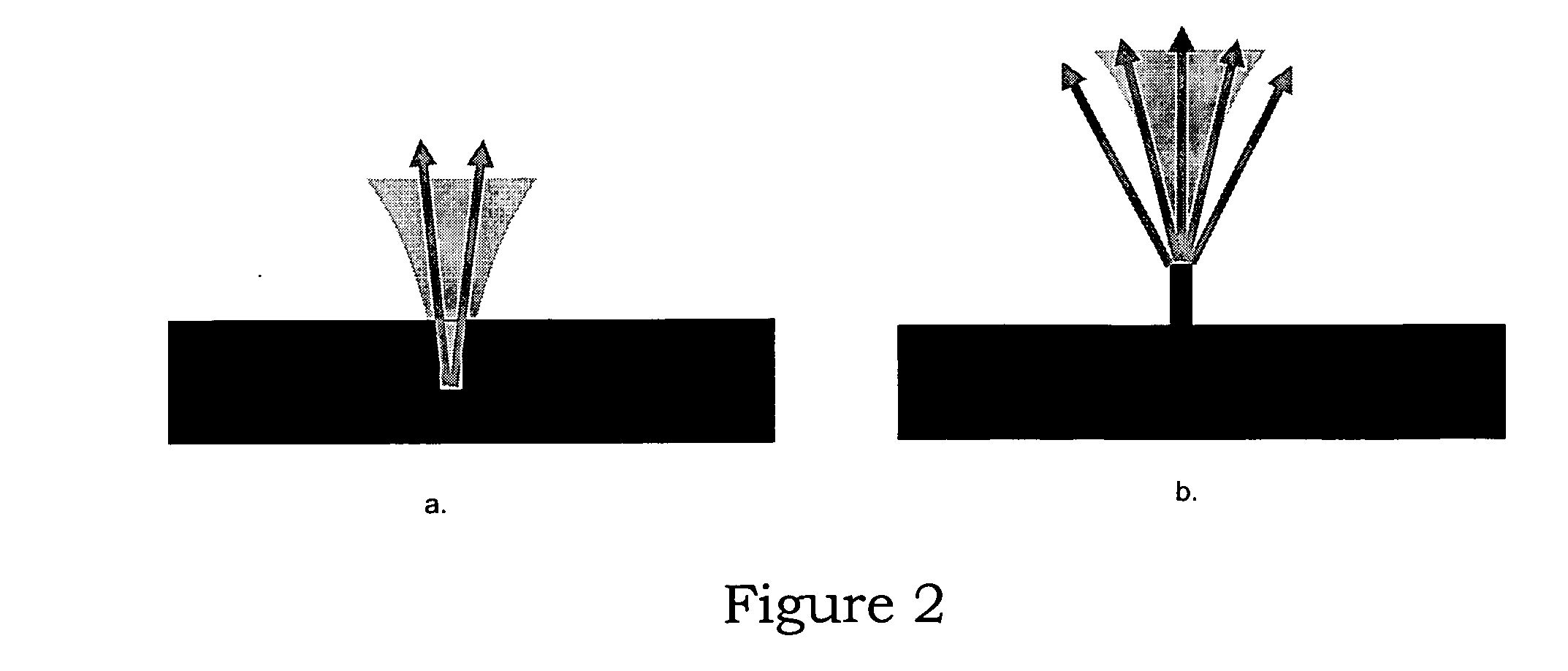Wafer measurement system and apparatus
a measurement system and wafer technology, applied in the direction of measurement devices, semiconductor/solid-state device testing/measurement, instruments, etc., can solve the problems of affecting the quality of wafers, and unable to align masks
- Summary
- Abstract
- Description
- Claims
- Application Information
AI Technical Summary
Benefits of technology
Problems solved by technology
Method used
Image
Examples
Embodiment Construction
[0054]The instant invention seeks to measure thin wafer thickness as well as the depth of any trench etched thereon. An optical stylus is used that can be thought of as a stylus of light. The stylus has a different color focus at different levels. Thus, any part that reflects the light of the optical stylus will only reflect color that is in focus. FIG. 8 shows the optical stylus. The system then relates color to height. The stylus scans the wafer with whatever density is required by the user, thus acquiring thousands and potentially tens of thousands of data points by which the surface can be defined.
[0055]Regular wafers, i.e., those wafers that have sufficient mass to support their own weight, can be measured by using two optical styli, one from the top and one from the bottom. The separate surfaces acquired by the two styli are related to each other through a calibration operation. Thus, the system can determine the shape and calculate warp, bow, and various other shape values of...
PUM
 Login to View More
Login to View More Abstract
Description
Claims
Application Information
 Login to View More
Login to View More - R&D
- Intellectual Property
- Life Sciences
- Materials
- Tech Scout
- Unparalleled Data Quality
- Higher Quality Content
- 60% Fewer Hallucinations
Browse by: Latest US Patents, China's latest patents, Technical Efficacy Thesaurus, Application Domain, Technology Topic, Popular Technical Reports.
© 2025 PatSnap. All rights reserved.Legal|Privacy policy|Modern Slavery Act Transparency Statement|Sitemap|About US| Contact US: help@patsnap.com



